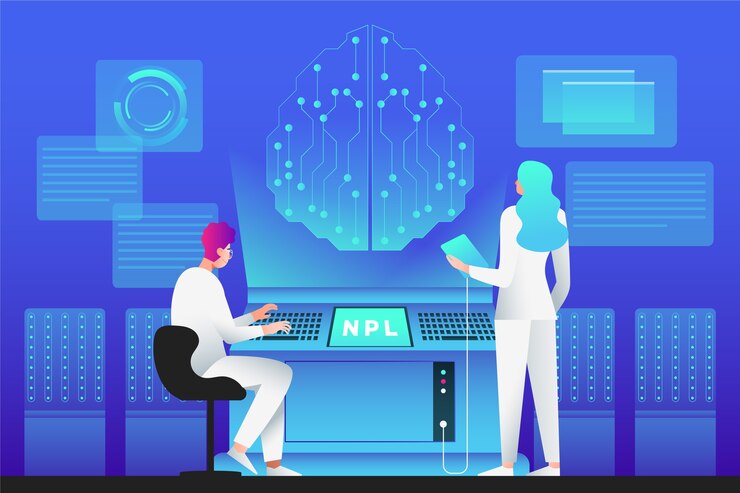
Digital technologies are reshaping the landscape of business, communication, and daily life. Among the most transformative digital technologies are Artificial Intelligence (AI) and Cloud Computing. This article explores these technologies, detailing their applications, benefits, and future implications for various industries.
Artificial Intelligence (AI): Transforming the Digital Era
Artificial Intelligence (AI) represents a significant leap forward in digital technology, enabling systems to perform tasks that traditionally require human intelligence. AI technologies are increasingly integrated into business processes, enhancing efficiency, decision-making, and customer experiences.
- AI in Business Operations AI is streamlining and optimizing business operations through automation and advanced data analysis.
- Automated Workflow: AI tools automate repetitive and time-consuming tasks such as data entry, customer support, and scheduling, freeing up human resources for more strategic activities.
- Predictive Analytics: AI algorithms analyze historical data to predict future trends, providing businesses with valuable insights for strategic planning and decision-making.
- Intelligent Decision Support: AI systems assist in decision-making by analyzing data and providing recommendations, improving accuracy and efficiency in business processes.
- AI in Customer Experience AI enhances customer interactions and engagement by providing personalized and responsive services.
- Chatbots and Virtual Assistants: AI-powered chatbots handle customer queries, provide recommendations, and perform transactions, offering 24/7 support and improving user satisfaction.
- Personalization Engines: AI analyzes user behavior and preferences to deliver tailored content, product recommendations, and marketing messages, enhancing the overall customer experience.
- Sentiment Analysis: AI tools assess customer feedback and social media interactions to gauge sentiment, identify emerging trends, and address issues proactively.
- AI in Healthcare AI is revolutionizing healthcare by improving diagnostics, treatment, and patient management.
- Medical Imaging: AI algorithms analyze medical images such as X-rays and MRIs to detect anomalies and assist radiologists in diagnosing diseases with higher accuracy.
- Personalized Medicine: AI solutions analyze patient data to create customized treatment plans, optimizing outcomes and minimizing side effects.
- Drug Discovery: AI accelerates the drug discovery process by analyzing biological data and predicting how new compounds will interact with targets, speeding up the development of new medications.
Cloud Computing: Enabling Scalable and Flexible Digital Solutions
Cloud Computing provides a robust infrastructure for delivering digital services and managing IT resources over the internet. It offers scalable, flexible, and cost-effective solutions that are transforming how organizations operate and deliver value.
- Cloud Infrastructure Cloud infrastructure solutions offer businesses scalable and efficient IT resources.
- Infrastructure as a Service (IaaS): IaaS provides virtualized computing resources such as servers, storage, and networks over the internet, allowing businesses to scale their IT infrastructure based on demand and reduce capital expenditures.
- Platform as a Service (PaaS): PaaS offers a platform for developing, testing, and deploying applications without managing the underlying hardware or software, accelerating development cycles and reducing time-to-market.
- Software as a Service (SaaS): SaaS delivers software applications via the internet on a subscription basis, eliminating the need for local installations and providing users with access from any device.
- Cloud Storage and Data Management Cloud storage solutions offer scalable and secure options for managing and storing data.
- Scalable Storage Solutions: Cloud storage provides virtually unlimited capacity, enabling businesses to store and manage growing volumes of data without investing in physical infrastructure.
- Data Backup and Recovery: Cloud-based backup and recovery solutions ensure data is securely backed up and can be quickly restored in case of data loss, system failures, or disasters.
- Collaborative Tools: Cloud storage facilitates real-time collaboration on documents and projects, enabling teams to work together from different locations and improving productivity.
- Cloud Security and Compliance Ensuring the security and compliance of cloud-based systems is critical for protecting sensitive data and maintaining trust.
- Data Encryption: Cloud security solutions include encryption to protect data both in transit and at rest, safeguarding it from unauthorized access and breaches.
- Access Control: Robust access control mechanisms, such as multi-factor authentication and role-based access, ensure that only authorized users can access and manage data and applications.
- Compliance and Auditing: Cloud service providers adhere to industry standards and regulations for data protection, conducting regular audits to ensure compliance and address potential security vulnerabilities.

The Future of Digital Technologies
- Emerging Trends
- AI and Automation Integration: The integration of AI with automation technologies will drive further advancements in efficiency and productivity across various industries.
- Edge Computing: Edge computing brings data processing closer to the source, reducing latency and enabling real-time decision-making for applications such as IoT and autonomous systems.
- Hybrid and Multi-Cloud Strategies: Businesses are increasingly adopting hybrid and multi-cloud strategies to optimize resource utilization, improve resilience, and avoid vendor lock-in.
- Challenges and Opportunities
- Data Privacy and Security: Ensuring data privacy and security remains a key challenge in the digital age, requiring ongoing innovation and vigilance to protect against threats.
- Scalability and Integration: The ability to scale and integrate new technologies with existing systems is essential for maximizing the benefits of digital solutions.
- Cost Management: Managing costs associated with implementing and maintaining digital technologies is crucial for achieving a positive return on investment and ensuring long-term success.
- Collaboration and Innovation
- Cross-Industry Collaboration: Partnerships between technology providers, industry experts, and research institutions foster innovation and accelerate the development of new solutions.
- Open Source and Community Initiatives: Open source projects and community-driven initiatives contribute to the development of innovative and cost-effective digital technologies.
- Global Perspectives: Leveraging global expertise and perspectives helps address complex challenges and unlock new opportunities in the evolving digital landscape.
Conclusion
Digital technologies, particularly Artificial Intelligence (AI) and Cloud Computing, are driving significant transformations across industries. These technologies offer innovative solutions for improving efficiency, enhancing customer experiences, and enabling new business models. As digital technologies continue to evolve, staying informed about emerging trends and best practices will be key to leveraging their full potential and achieving sustained success in a rapidly changing world.
